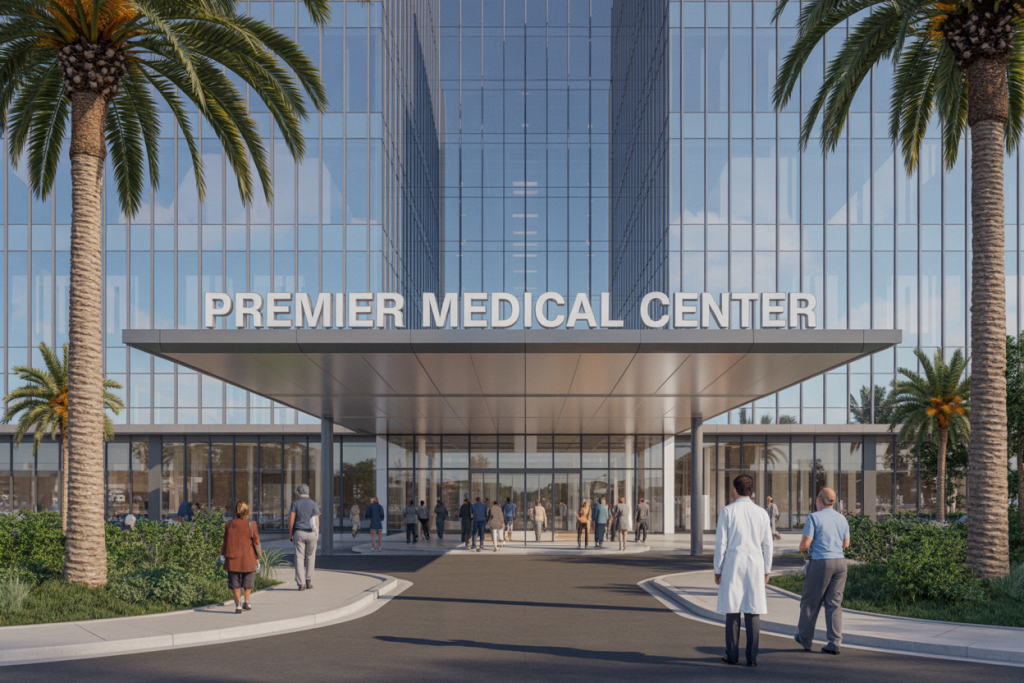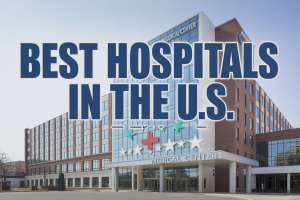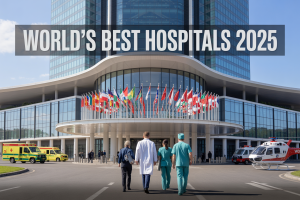When you need top-tier medical care, America’s premier medical centers offer the most advanced treatments and specialists in the country. This guide is designed for patients, families, and healthcare advocates seeking exceptional medical care at renowned institutions like Mayo Clinic, Johns Hopkins, and Cleveland Clinic.
You’ll discover the cutting-edge medical technology these centers use to diagnose and treat complex conditions that other hospitals can’t handle. We’ll also explore the world-class specialist care available, from leading oncologists to pioneering surgeons who are often the first to offer breakthrough treatments. Finally, we’ll cover what makes the patient experience at these facilities different, including comfort standards and comprehensive services that go far beyond basic medical treatment.
Cutting-Edge Medical Technology and Equipment You’ll Encounter
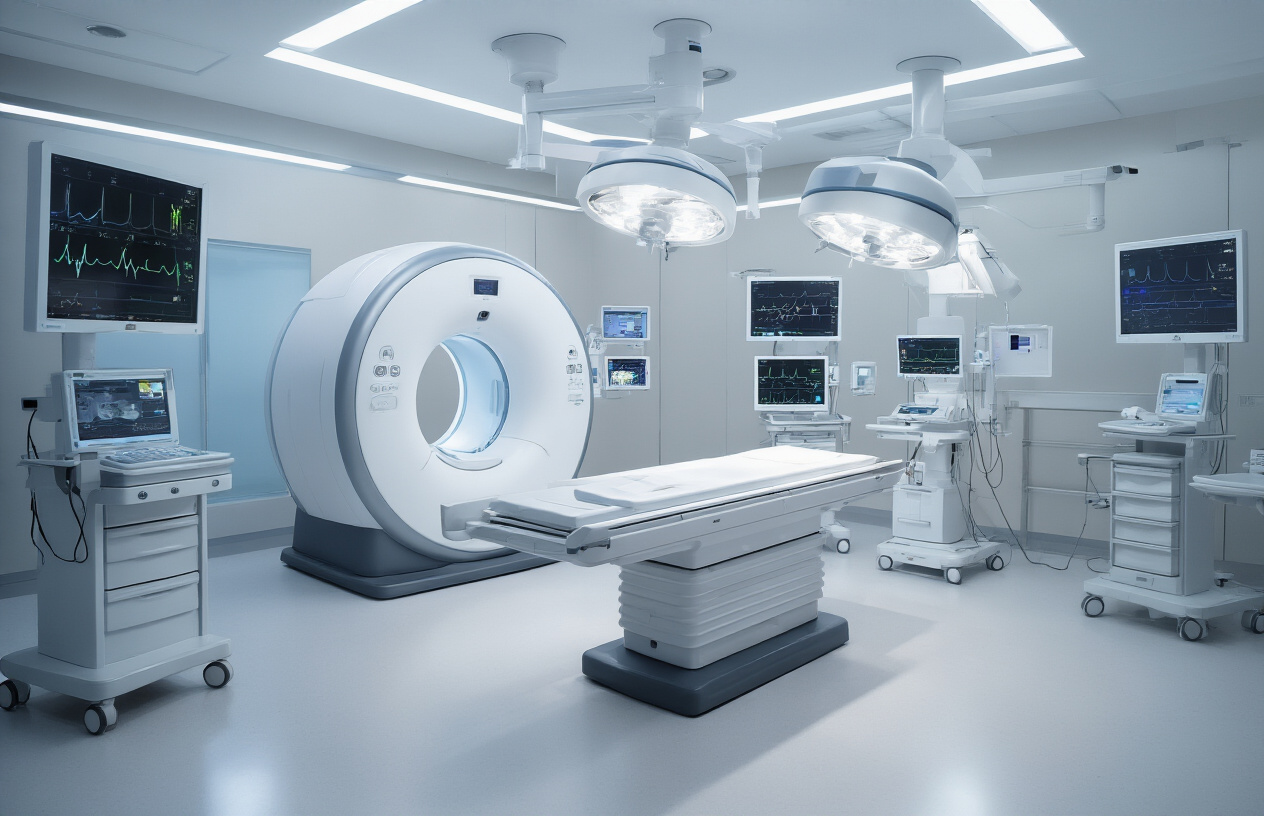
Advanced Imaging Systems for Precise Diagnosis
America’s premier medical centers house imaging technology that reads like science fiction. The latest MRI machines operate at 3 Tesla field strength, creating images so detailed they can spot brain lesions smaller than a grain of rice. These systems complete full-body scans in minutes rather than hours, reducing patient anxiety and improving diagnostic accuracy.
CT scanners at top-tier facilities now feature dual-energy technology, allowing radiologists to differentiate between materials like calcium and iodine with incredible precision. This capability proves especially valuable when examining blood vessels or detecting kidney stones. The radiation doses have dropped significantly too – modern scanners deliver up to 80% less radiation than older models while producing clearer images.
PET-CT hybrid machines combine metabolic and anatomical imaging in a single session. Cancer patients benefit enormously from this technology, as doctors can see both the tumor’s location and its metabolic activity. The newest models complete scans in 10-15 minutes compared to the 45-minute sessions of previous generations.
Digital mammography systems with tomosynthesis create 3D breast images, dramatically improving breast cancer detection rates. These machines can identify cancers up to two years earlier than traditional mammography, particularly in women with dense breast tissue.
Robotic Surgery Platforms for Minimally Invasive Procedures
Robotic surgical systems have transformed operating rooms across America’s leading hospitals. The da Vinci Xi platform allows surgeons to perform complex procedures through incisions smaller than a dime. Surgeons control robotic arms from a console, viewing the surgical site through a high-definition 3D camera that magnifies the area up to 10 times.
These systems excel in delicate procedures like prostate surgery, where preserving nearby nerves is critical for maintaining patient function. The robot’s steady hands eliminate natural tremors, and the enhanced visualization helps surgeons identify tissue layers that would be difficult to distinguish with the naked eye.
Orthopedic robots assist in joint replacement surgeries, creating precise bone cuts based on pre-operative CT scans. The Mako system guides surgeons during knee and hip replacements, ensuring implants align perfectly with the patient’s anatomy. This precision translates to longer-lasting joints and faster recovery times.
Neurosurgical robots like the ROSA system help surgeons navigate the brain with millimeter accuracy. The robot creates detailed maps of the brain’s structure and guides instruments along the safest path to reach tumors or perform biopsies.
AI-Powered Treatment Planning Systems
Artificial intelligence now assists doctors in making treatment decisions across multiple specialties. AI algorithms analyze thousands of similar cases to recommend optimal treatment protocols, reducing human error and improving outcomes.
Radiation oncology has embraced AI for treatment planning. Systems like Varian’s Ethos automatically adjust radiation beams during treatment sessions, accounting for daily changes in tumor size and patient positioning. This real-time adaptation delivers precise doses while protecting healthy tissue.
Diagnostic AI helps radiologists spot abnormalities they might otherwise miss. Google’s AI system can detect diabetic retinopathy in eye photographs with 90% accuracy, while IBM Watson analyzes pathology slides to identify cancer cells. These tools don’t replace doctors but serve as highly skilled second opinions.
Predictive analytics identify patients at risk for complications before symptoms appear. Hospitals use AI to monitor vital signs, lab results, and other data points to predict sepsis, heart failure, or other serious conditions hours before traditional methods would detect problems.
State-of-the-Art Laboratory and Testing Facilities
Modern laboratory facilities process thousands of samples daily with remarkable speed and accuracy. Automated systems handle routine blood tests from start to finish, reducing human error and delivering results in hours rather than days.
Next-generation DNA sequencing machines can map a patient’s entire genome in 24 hours. This capability revolutionizes cancer treatment, as doctors can identify specific genetic mutations driving tumor growth and select targeted therapies accordingly.
Point-of-care testing brings laboratory capabilities directly to patient bedsides. Portable devices perform blood gas analysis, cardiac enzyme tests, and infectious disease screening within minutes. Emergency departments rely heavily on these systems to make rapid treatment decisions.
Liquid chromatography-mass spectrometry systems detect trace amounts of drugs, toxins, or biomarkers in blood samples. These highly sensitive instruments can identify therapeutic drug levels or diagnose rare metabolic disorders that standard tests might miss.
Molecular diagnostics laboratories use PCR technology to detect genetic material from viruses, bacteria, or cancer cells. During the COVID-19 pandemic, these facilities processed millions of tests, demonstrating their critical role in public health responses.
World-Class Specialist Care and Expertise Available

Board-Certified Physicians with International Recognition
America’s premier medical centers attract some of the most accomplished physicians in the world. These doctors don’t just meet standard certification requirements – they represent the pinnacle of medical expertise. Many hold dual appointments at leading universities, publish groundbreaking research in top-tier medical journals, and serve on international medical boards.
You’ll find physicians who’ve trained at institutions like Harvard, Johns Hopkins, and Stanford before completing fellowships at renowned centers worldwide. These doctors often maintain active research programs while seeing patients, bringing cutting-edge knowledge directly to your bedside. Many have received prestigious awards from organizations like the American Medical Association, National Academy of Medicine, or international medical societies.
What sets these physicians apart goes beyond their credentials. They regularly present at international conferences, collaborate with colleagues across continents, and often serve as consultants for complex cases worldwide. This global perspective means they stay current with the latest treatment protocols and emerging therapies that might not be widely available elsewhere.
Multidisciplinary Team Approach to Complex Cases
Complex medical conditions rarely fit into neat categories, which is why top medical centers excel at bringing together specialists from different fields. When you have a challenging diagnosis, you’re not just seeing one doctor – you’re getting input from an entire team of experts working together.
Picture this: a patient with a rare neurological condition might have their case reviewed by neurologists, neurosurgeons, radiologists, pathologists, and rehabilitation specialists all in the same week. These teams meet regularly in what are called “tumor boards” or “case conferences” where they discuss the best treatment approach for each individual patient.
This collaborative approach means faster diagnosis and more comprehensive treatment plans. Instead of bouncing between different specialists over months, you get coordinated care where everyone is on the same page. The teams use sophisticated communication systems and shared electronic health records to make sure nothing falls through the cracks.
Access to Clinical Trials and Experimental Treatments
Premier medical centers serve as testing grounds for tomorrow’s breakthrough treatments. They conduct hundreds of clinical trials each year, giving patients access to therapies that won’t be available to the general public for years.
These aren’t just last-resort options for desperate cases. Many trials test new treatments that could be more effective or have fewer side effects than current standard care. You might have access to new cancer immunotherapies, innovative surgical techniques, or advanced medical devices before they receive FDA approval.
Research coordinators at these centers help match patients with appropriate trials based on their specific condition, medical history, and treatment goals. They walk you through the process, explain potential benefits and risks, and provide ongoing support throughout the trial period.
Subspecialty Services for Rare Conditions
When you’re dealing with a condition that affects fewer than one in 10,000 people, finding the right expertise becomes critical. Premier medical centers often house the only specialists in certain rare diseases within hundreds of miles.
These subspecialists have dedicated their careers to understanding conditions that most doctors might see only once or twice. They maintain databases of patients with similar conditions, participate in international registries, and collaborate with researchers worldwide to advance treatment options.
You’ll find specialized clinics for conditions like primary immunodeficiencies, rare genetic disorders, complex metabolic diseases, and unusual autoimmune conditions. These experts don’t just treat symptoms – they understand the underlying mechanisms of rare diseases and can offer personalized treatment approaches based on the latest research.
Patient Experience and Comfort Standards

Luxury Amenities and Hotel-Style Accommodations
America’s top medical centers have completely transformed the traditional hospital experience by creating environments that rival five-star hotels. Private patient rooms come standard with panoramic city views, premium bedding with Egyptian cotton linens, and marble-appointed bathrooms featuring rainfall showers and heated floors. Many facilities offer gourmet room service menus crafted by renowned chefs, featuring everything from organic farm-to-table options to international cuisine that accommodates diverse dietary preferences and cultural needs.
The amenities extend far beyond basic comfort. Patients can enjoy spa-style services including massage therapy, aromatherapy treatments, and meditation rooms designed with calming water features and natural lighting. Some centers provide personal concierge services to handle everything from restaurant reservations to coordinating transportation for family members. High-speed Wi-Fi, large flat-screen televisions with premium entertainment packages, and dedicated workspaces allow patients to stay connected and productive during extended stays.
| Amenity Category | Standard Features | Premium Offerings |
|---|---|---|
| Accommodation | Private rooms, premium bedding | Suites with separate living areas, butler service |
| Dining | Gourmet room service, dietary specialists | Chef-prepared meals, wine pairings |
| Technology | High-speed internet, entertainment systems | Smart room controls, telehealth capabilities |
| Wellness | Spa services, fitness access | Personal trainers, holistic therapy options |
Personalized Care Coordination and Support Services
Every patient receives a dedicated care coordinator who serves as their primary point of contact throughout the entire medical journey. These professionals, often holding advanced degrees in healthcare administration or nursing, create comprehensive care plans that extend beyond medical treatments to address logistical, emotional, and practical needs. They coordinate appointments across multiple specialists, arrange transportation between facilities, and ensure seamless communication between all members of the care team.
The support services include financial counselors who work directly with insurance providers to maximize coverage and minimize out-of-pocket expenses. Social workers help patients and families navigate complex medical decisions while providing emotional support during challenging diagnoses or treatment periods. Many centers employ patient advocates who speak multiple languages and understand diverse cultural backgrounds, ensuring that language barriers never compromise care quality.
Technology plays a crucial role in personalized care delivery. Patients receive access to secure mobile applications that provide real-time updates on test results, medication schedules, and upcoming appointments. These platforms also facilitate direct communication with healthcare providers through secure messaging systems, reducing wait times and improving response rates for non-emergency questions.
Family-Friendly Facilities and Visitor Accommodations
Recognizing that healing happens best with strong family support, premier medical centers have created comprehensive facilities designed for extended family stays. On-site hotels offer discounted rates for patient families, with shuttle services providing convenient transportation between accommodations and medical facilities. These hotels often feature fully equipped kitchenettes, laundry facilities, and business centers to help families maintain normal routines during extended visits.
Family lounges throughout the medical facilities provide comfortable spaces for relaxation and private conversations. These areas include children’s play zones with educational games and quiet study areas for older siblings who need to keep up with schoolwork. Many centers partner with local schools to provide tutoring services and ensure that young family members don’t fall behind academically during prolonged medical stays.
The facilities also accommodate cultural and religious needs with dedicated prayer rooms, meditation spaces, and dietary options that respect various traditions and restrictions. Some centers maintain relationships with local religious leaders and cultural organizations to provide additional spiritual and emotional support during difficult times. Parking is typically complimentary for families, with valet services available to reduce stress during emotionally challenging visits.
Child-friendly amenities include indoor playgrounds, movie theaters, and supervised activity programs that allow parents to focus on medical consultations while knowing their children are safe and entertained. Pet therapy programs bring specially trained animals to provide comfort and emotional support to both patients and their families during the healing process.
Comprehensive Services Beyond Medical Treatment

Integrated Wellness and Rehabilitation Programs
Premier medical centers understand that healing goes far beyond treating immediate medical conditions. These institutions have developed comprehensive wellness ecosystems that address every aspect of patient recovery and long-term health maintenance. Their rehabilitation programs integrate physical therapy, occupational therapy, and speech therapy under one roof, creating seamless care transitions for patients with complex needs.
Physical rehabilitation facilities at these centers often feature state-of-the-art equipment including anti-gravity treadmills, robotic-assisted walking devices, and virtual reality systems for neurological rehabilitation. Patients recovering from strokes, traumatic brain injuries, or major surgeries benefit from these advanced technologies that accelerate recovery times and improve outcomes. Occupational therapy programs focus on helping patients regain independence in daily activities, while specialized speech pathologists work with patients who have communication or swallowing disorders.
Many centers also offer alternative and complementary therapies alongside traditional medical treatments. These might include acupuncture, massage therapy, meditation classes, and art therapy. Some facilities have dedicated meditation gardens, healing spaces designed with natural lighting, and even therapy animal programs to support emotional healing.
Mental Health and Counseling Support
The connection between mental and physical health receives significant attention at America’s top medical centers. Integrated behavioral health programs ensure that psychological wellbeing is addressed as part of every patient’s treatment plan. These services extend beyond traditional psychiatry to include specialized support for medical trauma, chronic illness adjustment, and family counseling.
Licensed clinical social workers, psychologists, and psychiatrists work directly within medical teams to identify and address mental health concerns early in the treatment process. This collaborative approach means patients don’t need separate appointments or referrals to access mental health support – it’s woven into their overall care experience.
Specialized programs often include support groups for specific conditions like cancer, heart disease, or neurological disorders. Peer support networks connect patients with others who have faced similar challenges, creating powerful healing communities. Many centers also offer mindfulness-based stress reduction programs and cognitive behavioral therapy specifically tailored for medical patients.
Nutrition and Lifestyle Guidance
Premier medical centers employ registered dietitians and certified nutritionists who work closely with medical teams to develop personalized nutrition plans. These professionals understand how different medical conditions, medications, and treatments affect nutritional needs and create tailored approaches for each patient.
Educational programs teach patients practical skills for maintaining healthy lifestyles after discharge. Cooking classes, grocery store tours, and meal planning workshops help patients translate medical recommendations into daily practice. Some centers have demonstration kitchens where patients and families can learn to prepare heart-healthy, diabetic-friendly, or other specialized meals.
Lifestyle medicine programs address broader health factors including sleep hygiene, stress management, and physical activity recommendations. These programs often include fitness assessments, personalized exercise prescriptions, and ongoing coaching to help patients maintain healthy habits long after their medical treatment concludes.
Discharge Planning and Follow-Up Care
Discharge planning begins from the moment patients arrive at premier medical centers. Dedicated care coordinators work with patients and families to ensure smooth transitions from hospital to home or other care settings. This planning process addresses medication management, home safety assessments, medical equipment needs, and coordination with community healthcare providers.
Follow-up care programs include telemedicine options, home health services, and structured check-in protocols to monitor patient progress after discharge. Many centers offer 24/7 nurse helplines, online patient portals for communicating with care teams, and remote monitoring capabilities for patients with chronic conditions.
Care coordinators also help patients navigate insurance requirements, connect with community resources, and access transportation services for follow-up appointments. This comprehensive support system significantly reduces readmission rates and improves long-term patient outcomes.
Geographic Distribution and Accessibility
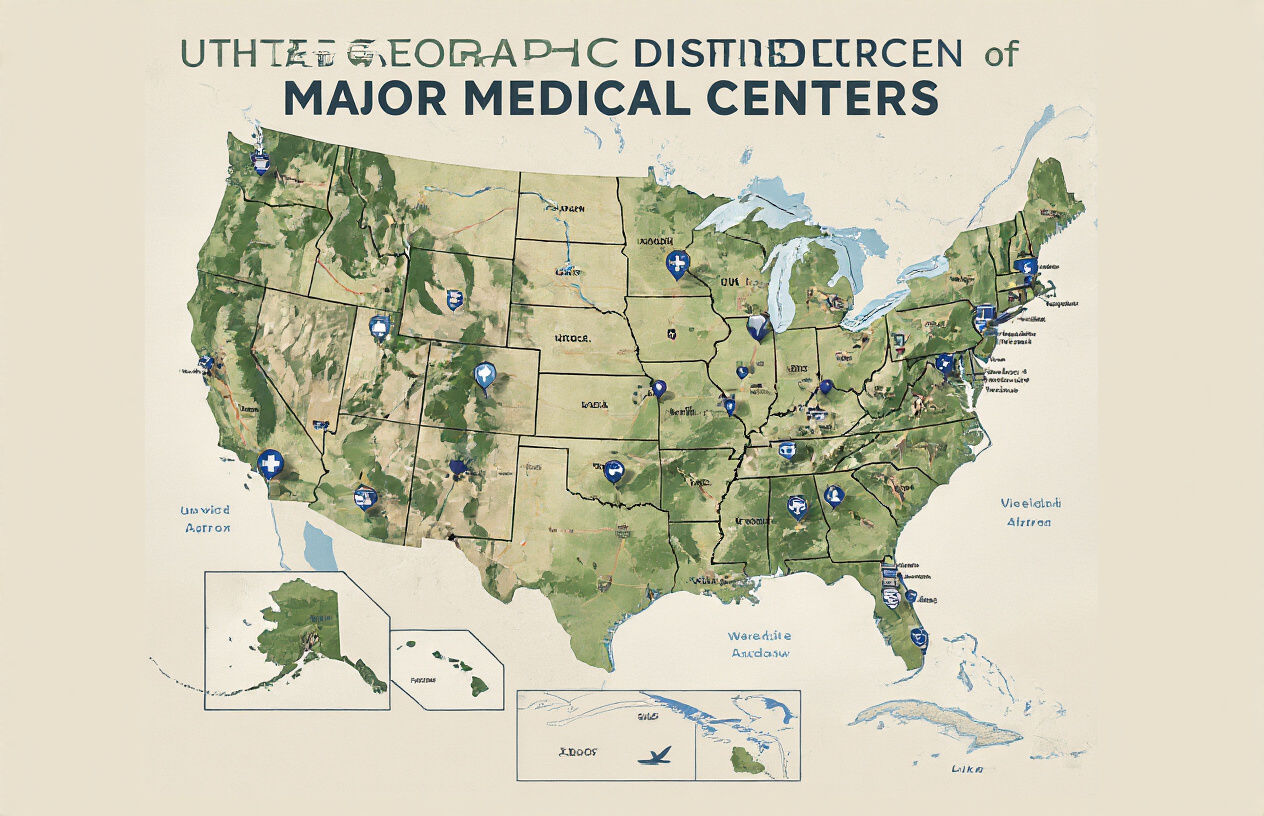
East Coast Medical Powerhouses
The East Coast houses some of America’s most prestigious medical institutions, with a concentration of world-renowned hospitals stretching from Boston to Baltimore. Massachusetts General Hospital in Boston stands as the oldest hospital in the country and consistently ranks among the top medical centers nationwide. The hospital sits conveniently in the heart of Boston, accessible via the Red Line MBTA, making it easy for patients traveling from across New England.
Johns Hopkins Hospital in Baltimore represents another cornerstone of East Coast medical excellence. The institution pioneered numerous medical breakthroughs and maintains its reputation through cutting-edge research facilities. Patients can reach Hopkins via Amtrak’s Northeast Corridor or through Baltimore-Washington International Airport, which offers direct flights from major cities nationwide.
New York City dominates the East Coast medical landscape with multiple premier institutions. NewYork-Presbyterian spans two campuses—Columbia and Weill Cornell—offering patients comprehensive care in Manhattan’s Upper East and Upper West sides. The hospital system benefits from New York’s extensive subway network and three major airports, making it accessible for international patients seeking specialized treatments.
Cleveland Clinic in Ohio, while technically considered East Coast by medical standards, bridges the gap between eastern and midwestern healthcare. The main campus in Cleveland provides easy access via Cleveland Hopkins International Airport, with shuttle services directly to the medical center. The clinic has expanded its footprint with locations in Florida, Nevada, and internationally, creating a network that serves patients across multiple time zones.
West Coast Innovation Centers
California leads the West Coast medical revolution with institutions that blend traditional excellence with Silicon Valley innovation. UCSF Medical Center in San Francisco represents the pinnacle of West Coast medical care, perched on Parnassus Heights with stunning city views. The hospital integrates seamlessly with San Francisco’s public transportation system, including Muni buses and the N-Judah light rail line.
Cedars-Sinai Medical Center in Los Angeles attracts patients from around the globe, particularly those in the entertainment industry. Located in the heart of West Hollywood, the hospital sits minutes away from Beverly Hills and offers valet parking services that cater to high-profile patients. Los Angeles International Airport provides international connectivity, while the hospital’s concierge services help coordinate travel arrangements for out-of-state patients.
UCLA Medical Center in Westwood combines academic excellence with clinical innovation. The campus benefits from Los Angeles’s extensive freeway system and Metro rail connections. The hospital’s proximity to the Pacific Ocean creates a unique healing environment that many patients find therapeutic.
Stanford Health Care in Palo Alto embodies the intersection of medicine and technology. Located in the heart of Silicon Valley, the medical center attracts tech executives and their families who value both convenience and cutting-edge treatments. San Francisco International Airport and San Jose airports provide multiple arrival options for patients traveling from across the country.
Midwest Healthcare Excellence
The Midwest quietly houses some of America’s most respected medical institutions, offering world-class care with genuine hospitality. Mayo Clinic in Rochester, Minnesota, stands as the region’s crown jewel and arguably the most famous medical destination worldwide. Despite its location in a smaller city, Mayo Clinic operates its own airport shuttle service and maintains partnerships with major airlines to facilitate patient travel. The clinic’s integrated approach means patients can complete complex diagnostic workups and treatments within a compact, walkable campus.
Northwestern Memorial Hospital in Chicago capitalizes on the city’s position as a major transportation hub. Located in the Streeterville neighborhood, the hospital sits within walking distance of Michigan Avenue shopping and numerous hotels. O’Hare and Midway airports provide extensive flight options, while Amtrak’s Union Station connects patients from across the Midwest corridor.
The geographic spread of these premier medical centers creates strategic advantages for patients nationwide. East Coast institutions excel in traditional medicine and research, West Coast centers lead in technological integration and specialized treatments, while Midwest facilities offer comprehensive care with exceptional patient service. Each region’s unique transportation infrastructure and cultural approach to healthcare creates distinct patient experiences, allowing individuals to choose medical centers that align with their preferences for urban versus suburban settings, teaching hospital environments, or specialized treatment approaches.
Cost Considerations and Insurance Coverage

Premium Pricing Structure and What It Includes
Premier medical centers typically charge 30-60% more than standard hospitals, reflecting their investment in cutting-edge technology, world-renowned specialists, and superior facilities. These costs encompass several key components that justify the higher price point.
Room rates at top-tier facilities range from $3,000 to $8,000 per day for standard private rooms, with luxury suites reaching $15,000 daily. These rates include personalized nursing care with lower patient-to-nurse ratios, premium amenities like gourmet meal services, concierge assistance, and state-of-the-art entertainment systems.
Physician fees reflect the expertise of nationally recognized specialists who often command consultation fees of $500-1,500, compared to $200-400 at community hospitals. Surgical procedures carry premium pricing due to the use of advanced robotic systems, specialized equipment, and extended recovery monitoring.
Diagnostic imaging and laboratory services cost significantly more but deliver faster results with enhanced accuracy. MRI scans might cost $4,000-6,000 versus $1,500-2,500 elsewhere, while comprehensive health screenings can reach $10,000-25,000 for executive packages.
Insurance Network Participation and Benefits
Most premier medical centers maintain selective relationships with insurance providers, participating primarily with high-tier plans that offer broader coverage and higher reimbursement rates. These facilities often work with PPO plans, executive health packages, and specialized medical tourism insurance.
Major insurance carriers like Blue Cross Blue Shield, Aetna, Cigna, and UnitedHealth typically have agreements with these centers, though coverage levels vary significantly. Premium insurance plans may cover 70-90% of costs after deductibles, while standard plans might only cover 50-60%.
Some premier centers operate as out-of-network providers for certain insurance plans, requiring patients to pay upfront and seek reimbursement. This arrangement allows facilities to maintain their pricing structure while still accepting some insurance benefits.
International patients often rely on specialized medical tourism insurance or global health coverage through employers or private policies designed for high-end medical care.
Financial Assistance Programs Available
Despite their premium positioning, leading medical centers offer various financial assistance options to make care accessible. Most facilities provide need-based financial aid programs that can reduce costs by 25-100% for qualifying patients based on income and family size.
Payment plan options allow patients to spread costs over 12-60 months with little or no interest. Some centers partner with medical financing companies offering loans specifically designed for healthcare expenses, with approval rates often higher than traditional loans.
Charity care programs exist at many premier facilities, particularly those affiliated with religious organizations or academic institutions. These programs may cover complete treatment costs for patients meeting specific criteria, including uninsured individuals or those facing catastrophic medical expenses.
Corporate partnerships with major employers sometimes provide direct billing arrangements or negotiated rates for employees, making premier care more accessible to working professionals.
Value Proposition of Premier Care
The higher costs at premier medical centers deliver measurable benefits that many patients find worthwhile. Patient outcomes consistently rank higher, with lower infection rates, shorter recovery times, and reduced readmission rates compared to standard facilities.
Access to experimental treatments, clinical trials, and innovative procedures unavailable elsewhere can be life-changing for patients with complex conditions. These centers often serve as last resorts for cases that other hospitals cannot handle effectively.
Time savings represent significant value, with faster appointment scheduling, same-day diagnostic results, and coordinated care teams that eliminate the need for multiple visits across different locations. Executive health programs can complete comprehensive evaluations in 1-2 days versus weeks or months through traditional healthcare channels.
The psychological benefits of premium care environments, including reduced stress, enhanced comfort, and confidence in receiving the best possible treatment, contribute to better overall outcomes and patient satisfaction that many consider priceless.
How to Navigate and Prepare for Your Visit

Appointment Scheduling and Pre-Visit Requirements
Most premier medical centers operate on a referral basis, meaning you’ll typically need a recommendation from your primary care physician or another specialist. The scheduling process can take weeks or even months for non-urgent cases, so start early. When calling to schedule, have your insurance information, complete medical history, and current medications list ready.
Many top-tier facilities now use patient portals where you can submit appointment requests online. These systems often allow you to upload documents and complete pre-registration forms before your visit. Take advantage of these digital tools – they can significantly streamline your experience.
Before your appointment, you’ll likely receive a comprehensive packet of forms to complete. This typically includes detailed medical history questionnaires, current symptom assessments, and insurance verification documents. Don’t rush through these forms; the information you provide directly impacts the quality of care you’ll receive. If you’re unsure about any medical terminology or questions, contact the patient services department for clarification.
Some centers require specific pre-visit testing or imaging studies. Your referring physician might handle these, but double-check that all required materials will be available before your appointment. Missing a single test result could delay your consultation by weeks.
Medical Records Transfer and Documentation
Getting your medical records to the right place at the right time requires careful coordination. Start by creating a comprehensive list of all healthcare providers you’ve seen for your condition, including hospitals, specialists, imaging centers, and laboratories. Contact each facility’s medical records department at least 2-3 weeks before your appointment.
Most medical centers prefer electronic transfers, but policies vary significantly. Some accept patient-delivered records, while others only accept direct provider-to-provider transfers. Ask your new medical center about their preferred method and any specific formatting requirements.
Create your own organized medical file as a backup. Include copies of relevant test results, imaging studies, surgical reports, and medication lists from the past 2-3 years. Organize everything chronologically and create a one-page summary of your medical timeline. This personal file can be invaluable if official records are delayed or incomplete.
Don’t forget about imaging studies like CT scans, MRIs, or X-rays. These often need to be transferred separately from written reports. Many imaging centers can burn studies onto CDs or transfer them electronically, but this process takes time. Request these early and bring physical copies as backup.
Travel and Accommodation Planning Tips
Premier medical centers often draw patients from across the country, so travel planning becomes a crucial part of your healthcare journey. Book accommodations well in advance, especially if you’re visiting during peak seasons or if the medical center is located in a busy metropolitan area.
Many top medical centers maintain partnerships with nearby hotels that offer medical rates – sometimes 20-30% below standard prices. These partner hotels often provide shuttle services, extended checkout times, and other patient-friendly amenities. Contact the medical center’s patient services department for a list of recommended accommodations.
Consider staying closer to the medical center rather than in tourist areas, even if it costs slightly more. Traffic, parking, and navigation stress can impact your health and well-being before important appointments. Some medical centers offer on-site lodging or partner with nearby extended-stay facilities for patients requiring multiple visits or longer treatment periods.
Plan for potential weather delays or extended stays. Medical appointments sometimes run longer than expected, test results might require additional consultations, or treatment recommendations could extend your visit. Build flexibility into your travel plans and consider travel insurance if you’re coming from far away.
Research parking options in advance. Many medical centers charge premium rates for parking, and finding spots can be challenging during peak hours. Some facilities offer valet services or reserved parking for patients with mobility issues. Underground or covered parking might be worth the extra cost, especially during extreme weather.

America’s top medical centers consistently deliver exceptional care through their advanced technology, world-renowned specialists, and patient-focused approach. These premier institutions offer comprehensive services that extend far beyond basic treatment, creating an environment where cutting-edge medical equipment meets compassionate care. From coast to coast, these centers maintain the highest standards while ensuring patients feel supported throughout their entire healthcare journey.
When choosing one of these premier medical centers, take time to understand your insurance coverage and prepare for your visit by gathering all necessary medical records. The investment in world-class care often pays dividends in better outcomes and enhanced quality of life. Don’t hesitate to reach out to patient coordinators who can guide you through the process and help you make the most of the exceptional resources these institutions provide.

